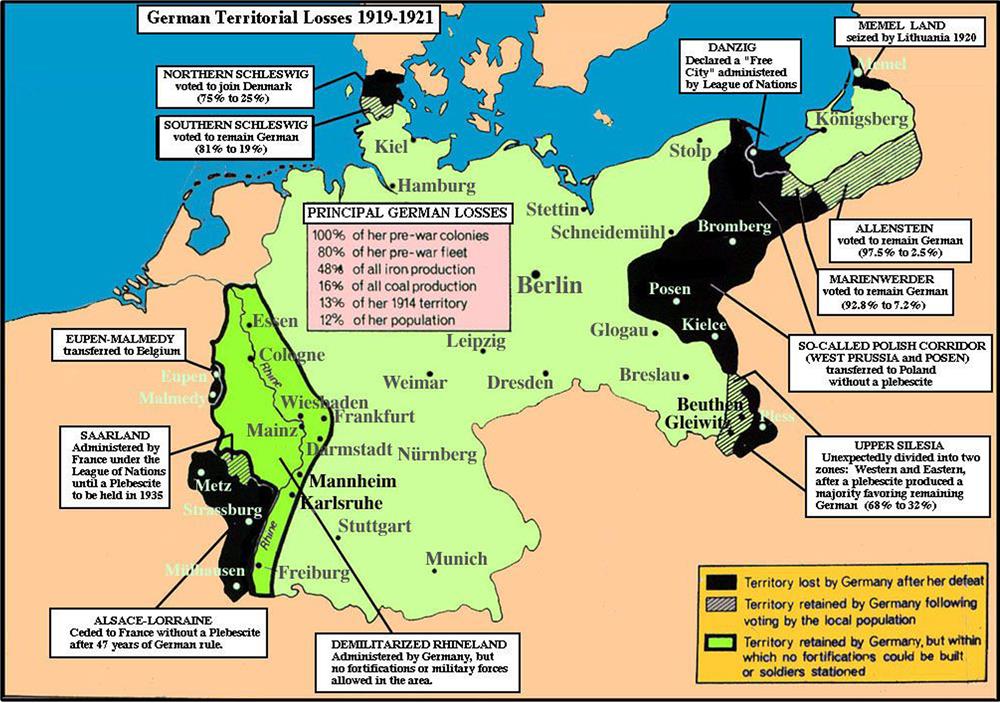High Seas Fleet Surrender 43 – The Treaty of Versailles
| < 42 – The last fatalities of WWI | Δ Index | 44 – The Royal Navy after WWI > |
The Armistice of 11th November 1918 ended the fighting and was prolonged three times while the outcome of WWI was negotiated at the Paris Peace Conference which was established on January 18, 1919 and continued until 24 July 1923.
First Armistice (11 November 1918 – 13 December 1918)
First prolongation (13 December 1918 – 16 January 1919)
Second prolongation (16 January 1919 – 16 February 1919)
Third prolongation (16 February 1919 – 10 January 1920)
The conference resulted in five separate treaties:
The treaty of Versailles, (with Germany) 28 June 1919, effective 10th January 1920;
The treaty of Saint-Germain, (with Austria) 10 Sep 1919;
The treaty of Neuilly, (with Bulgaria) 27 Nov 1919;
The treaty of Trianon, (with Hungary) 4 June 1920;
The treaty of Lausanne, (with the Ottoman Empire) 24 July 1923.
President Wilson of the USA, whose “Fourteen Points” led to the Armistice terms, became ill at the start of the talks (possibly with Spanish flu) allowing French Prime Minister Georges Clemenceau to advance demands for reparations in the Treaty of Versailles.
Wilson was awarded a Nobel Peace prize for his efforts.
 This map shows the territory that Germany lost as a result of the Treaty of Versailles.
This map shows the territory that Germany lost as a result of the Treaty of Versailles.
The Rhineland was occupied by Allied troops from 1918 until 1930.
The German government printed money to pay the war debts. The resulting hyperinflation damaged the economy leading to widespread civic unrest, the rise of the National Socialist Party in 1933 and ultimately to the outbreak of World War II.
| < 42 – The last fatalities of WWI | Δ Index | 44 – The Royal Navy after WWI > |